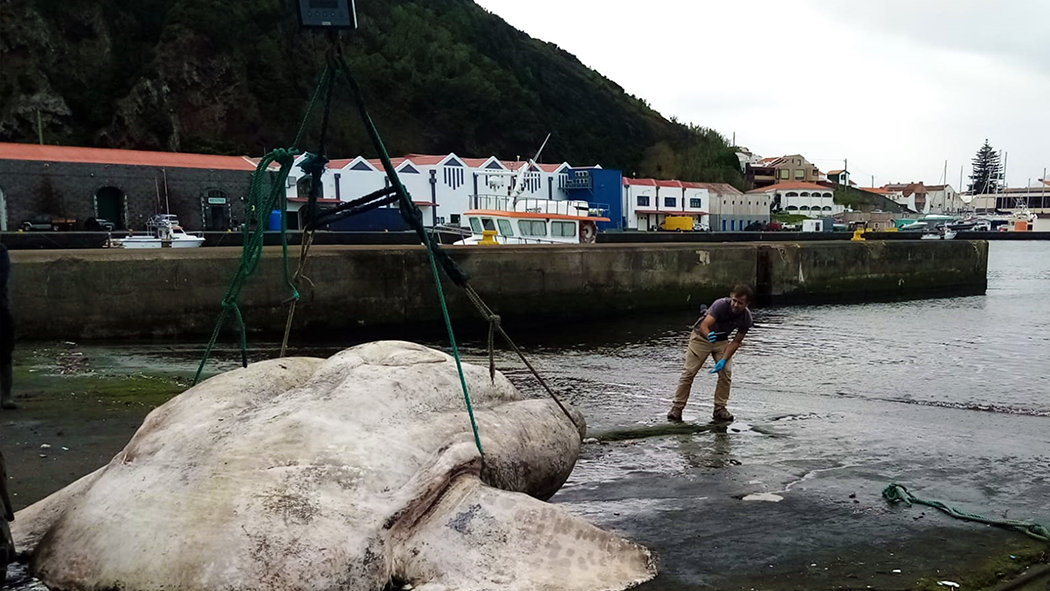Updated 5:23 pm EDT Oct. 21, 2022
A team of scientists in Portugal say they discovered the heaviest bony fish in the world in the Azores archipelago in the Atlantic Ocean.
The giant sunfish, weighing a little more than 3 tons, was discovered dead in the water on the Azores’ Faial Island by a fisherman last December, researchers said. A team with the Atlantic Naturalist Association, a Portuguese ocean conservation organization, helped bring the massive creature to land.
“Of course, we realized it was a massive sunfish … we got the perception right on that day that it should be a world record,” said José Nuno Gomes-Pereira, a researcher with the Atlantic Naturalist Association.
Gomes-Pereira and his team enlisted the help of a forklift to weigh and measure the fish.
It was 10.6 feet long and weighed about 6,050 pounds, according to the research paper, published in the peer-reviewed Journal of Fish Biology. It became the heaviest bony fish ever documented, breaking the record set in 1996 by a sunfish of the same species, Mola alexandrini. That one was discovered in Japanese waters, according to the research paper, and weighed about 2.5 tons.
There are two types of fish, cartilaginous and bony. Bony fish account for the majority of fish, according to Gomes-Pereira — think carp, salmon and bass. Cartilaginous fish have skeletons made of cartilage and encompass species like sharks and stingrays.
While the sunfish found in Portugal is the heaviest bony fish ever discovered it is far from the heaviest ocean creature.
Whale sharks, which are cartilaginous, weigh about 11 tons, according to the World Wildlife Fund.
The largest animal in the ocean (and the world) is the blue whale, a mammal, which can weigh up to 200 tons and stretch to nearly 100 feet, according to WWF. It’s also the biggest animal in the world, period.
Gomes-Pereira told USA TODAY Friday that the discovery of the sunfish was in part encouraging because it showed that the ocean can still sustain life for some of the planet’s largest fish. Ocean sunfish are listed as vulnerable to extinction by the International Union for Conservation of Nature.
Accurate population estimates for the Mola alexandrini species are scarce, Gomes-Pereira said. He believes the number may be somewhere in the few thousands based on the frequency of sightings by fishermen.
But the historic discovery also highlighted a considerable threat to large ocean wildlife.
“It’s also a warning – because we found the animal dead – that more management should be made regarding boat traffic,” Gomes-Pereira said. A large depression on the sunfish indicated that it was likely killed by a ship collision.
SPEED LIMITS IN THE OCEAN?: Massive ships are killing endangered whales each year.
What is the biggest whale?: Meet the blue whale.
Gomes-Pereira said large cargo ships that cruise near oceanic islands, like the Azores, pose a threat to rich marine biodiversity.




